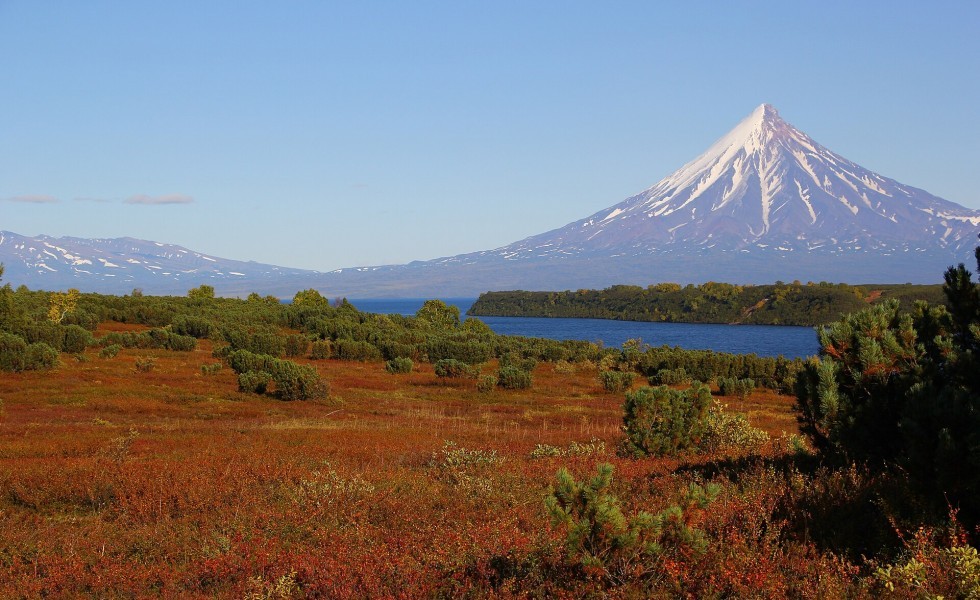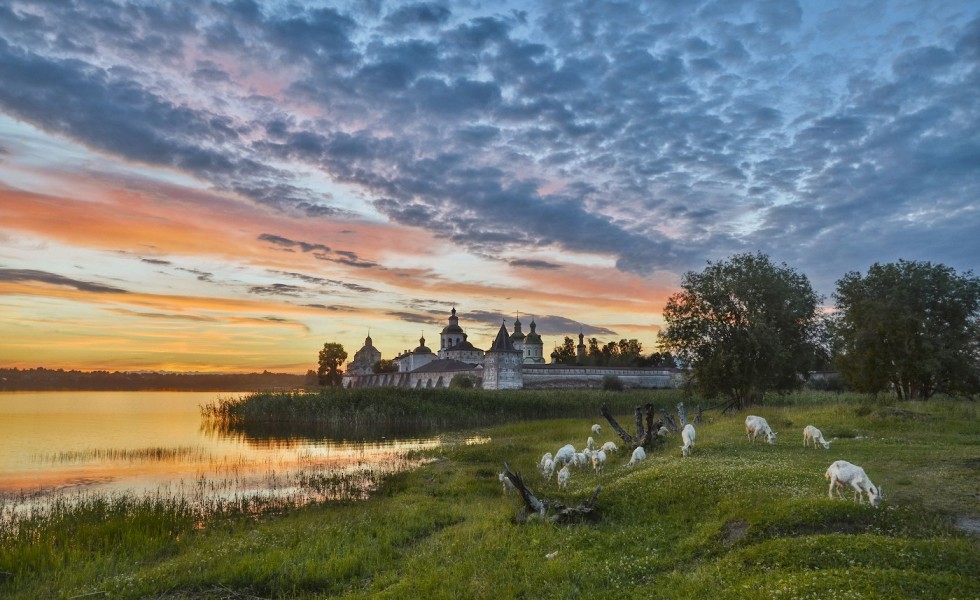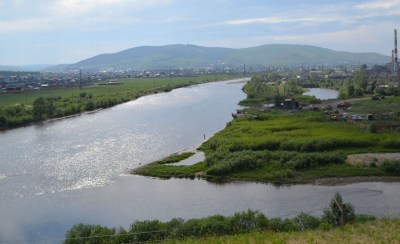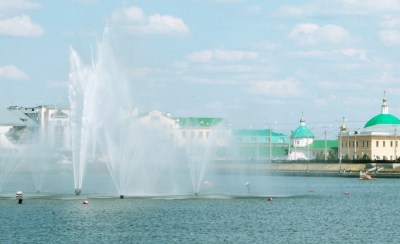Search for cities, countries, lakes and rivers
Russia

Russia, Kamchatka Krai © wikimedia.org
Russia Sea Temperature
This page provides detailed information about the water temperature in Russia. All cities and resorts on the coast, also in lakes and along the rivers. The range of sea temperatures for today. We find every spot where you can swim and tell you what the water temperature is there today and throughout the year.
Current Sea Temperature
-1.4°C
minimal
10.9°C
average
17.3°C
maximum
Graph of Sea Temperature Changes in Russia Over the Last 60 Days
The Warmest Places on the Seaside in Russia Today
The Most Popular Seaside Resorts in Russia
Seas and Oceans that Border Russia
- White Sea
- East-Siberian Sea
- Bering Sea
- Baltic Sea
- Avacha Bay
- Sea of Japan
- Sea of Azov
- Black Sea
- Gulf of Finland
- Barents Sea
- Sea of Okhotsk
- Kara Sea
- Caspian Sea

Russia, Vologda Oblast © wikimedia.org
Current Water Temperature in Lakes and Rivers
1.9°C
minimal
4.2°C
average
10.1°C
maximum
The Warmest Places on Lakes and Rivers in Russia Today
The Most Popular Lakes and Rivers in Russia
Russia: List of Regions
- Altai Krai
- Amur Oblast
- Arkhangelsk Oblast
- Astrakhan Oblast
- Bashkortostan
- Bryansk Oblast
- Buryatia
- Chelyabinsk Oblast
- Chukotka Autonomous Okrug
- Chuvashia
- Dagestan
- Irkutsk Oblast
- Ivanovo Oblast
- Kaliningrad Oblast
- Kalmykia
- Kaluga Oblast
- Kamchatka Krai
- Karachay-Cherkessia
- Kemerovo Oblast
- Khabarovsk Krai
- Khakassia
- Khanty-Mansi Autonomous Okrug
- Kirov Oblast
- Komi Republic
- Kostroma Oblast
- Krasnodar Krai
- Krasnoyarsk Krai
- Kurgan Oblast
- Leningrad Oblast
- Lipetsk Oblast
- Magadan Oblast
- Mari El
- Moscow
- Moscow Oblast
- Murmansk Oblast
- Nizhny Novgorod Oblast
- Novgorod Oblast
- Novosibirsk Oblast
- Omsk Oblast
- Orenburg Oblast
- Oryol Oblast
- Penza Oblast
- Perm Oblast
- Primorsky Krai
- Pskov Oblast
- Republic of Karelia
- Rostov Oblast
- Ryazan Oblast
- Saint Petersburg
- Sakha Republic
- Sakhalin Oblast
- Samara Oblast
- Saratov Oblast
- Smolensk Oblast
- Stavropol Krai
- Sverdlovsk Oblast
- Tatarstan
- Tomsk Oblast
- Transbaikal Oblast
- Tuva
- Tver Oblast
- Tyumen Oblast
- Udmurtia
- Ulyanovsk Oblast
- Vladimir Oblast
- Volgograd Oblast
- Vologda Oblast
- Voronezh Oblast
- Yamalo-Nenets Autonomous Okrug
- Yaroslavl Oblast



Water Temperature in Russia: General Trends and Swimming Opportunities
Russia, with its vast coastline along the Arctic and Pacific Oceans, as well as the Black Sea and the Sea of Azov, offers a variety of swimming opportunities depending on the region and the time of year. In the warmer months, areas along the Black Sea and the Caspian Sea become popular destinations for beachgoers and swimmers. The sea temperature in these regions typically rises to between 20°C and 25°C (68°F to 77°F) during the summer, providing comfortable conditions for swimming, especially around coastal cities like Sochi, Anapa, and Gelendzhik. The summer months, from June to September, are the best time for enjoying the waters in these regions.
In contrast, Russia's northern coastal areas, such as those along the Arctic Ocean, have much colder water temperatures, often below 5°C (41°F) year-round. Swimming here is generally not advisable due to the frigid conditions, and activities are limited to specific adventurous pursuits, such as polar diving. However, regions like Kamchatka in the Pacific and the Kuril Islands can offer a unique experience for those looking to explore Russia's remote, rugged coastlines. While the water remains cold, there are opportunities for those seeking a challenge in the form of cold-water swimming.
Beyond the coastal areas, rivers and lakes across Russia also provide opportunities for swimming. Popular spots include the Volga River and Lake Baikal, the world's deepest freshwater lake, where water temperatures can vary greatly depending on the location and season. In lakes, temperatures may reach more comfortable levels during the summer, making them popular choices for swimming, fishing, and relaxation. However, as with any large country, the temperature and safety conditions can vary significantly by region, and swimmers should always check local advisories before entering the water.
General Information and Geographical Location of Russia
Original name of the country: Российская Федерация
Russia is in Europe. The country is washed by more than ten seas, such as the Black Sea, the Sea of Azov, the Caspian Sea, the Baltic Sea, the Gulf of Finland, the White Sea and others. We also monitor water temperature in 67 rivers and 54 lakes in Russia. Russia is a large resort country and has a long coastline. To determine the temperature of the water in it, we track 394 settlements and resorts. Link to Google Maps.
Russia Weather
Russia has a highly diverse climate due to its vast size, ranging from Arctic conditions in the north to more temperate and even subtropical climates in the south. Most of the country experiences a continental climate, with long, cold winters and short, warm summers. In central Russia, including Moscow, winter temperatures often range from 10°F to 25°F (-12°C to -4°C), with heavy snowfall and strong winds. Summers, from June to August, bring warmer temperatures between 70°F and 85°F (21°C to 29°C), though heatwaves can occasionally push temperatures even higher. Rainfall is moderate, with the highest precipitation occurring in summer and early autumn.
Siberia, which covers a large portion of Russia, is known for its extreme cold. In cities like Yakutsk, winter temperatures can drop to -40°F to -60°F (-40°C to -51°C), making it one of the coldest inhabited places on Earth. Summers in Siberia, however, can be surprisingly warm, reaching 65°F to 85°F (18°C to 29°C) for a short period. In contrast, southern regions like Sochi on the Black Sea coast have a humid subtropical climate, with mild winters around 40°F to 55°F (4°C to 13°C) and hot summers reaching 85°F to 95°F (29°C to 35°C). This wide range of climatic zones makes Russia one of the most climatically diverse countries in the world.
Frequently Asked Questions About Russia and its Water Temperatures
What is the sea temperature today on the coast of Russia?
The sea temperature today on the coast of Russia ranges from from 29°F (-1.4°C) in Pevek to 63°F (17.3°C) in Adler.
What is the water temperature today in lakes and rivers in Russia?
The water temperature today in lakes and rivers in Russia ranges from 35°F (1.9°C) in Amga River to 50°F (10.1°C) in Kuban River.
Which seas and oceans border Russia?
Russia is bordered by 13 seas, namely: the White Sea, the East-Siberian Sea, the Bering Sea, the Baltic Sea, the Avacha Bay, the Sea of Japan, the Sea of Azov, the Black Sea, the Gulf of Finland, the Barents Sea, the Sea of Okhotsk, the Kara Sea, the Caspian Sea.
How long is the coastline in Russia?
According to The World Factbook, the length of Russia's coastline is 23,396 miles (37,653 km), while the World Resources Institute estimates it at 68,543 miles (110,310 km).
What is the best time for swimming and beach holidays on the coast of Russia?
In Russia, the average monthly sea temperature does not rise above 68 degrees Fahrenheit (20 degrees Celsius) in any month of the year. But the highest water temperature occurs in July and reaches 87 degrees Fahrenheit (31 degrees Celsius).
What is the sea temperature history in Russia?
Here are the ranges of sea temperatures in Russia by month based on historical data: in January from 24°F (-4°C) to 57°F (14°C), in February from 24°F (-4°C) to 53°F (12°C), in March from 26°F (-3°C) to 53°F (12°C), in April from 24°F (-4°C) to 64°F (18°C), in May from 26°F (-3°C) to 77°F (25°C), in June from 26°F (-3°C) to 82°F (28°C), in July from 26°F (-3°C) to 87°F (31°C), in August from 30°F (-1°C) to 86°F (30°C), in September from 30°F (-1°C) to 84°F (29°C), in October from 26°F (-3°C) to 78°F (26°C), in November from 28°F (-2°C) to 69°F (21°C), in December from 26°F (-3°C) to 62°F (17°C).
